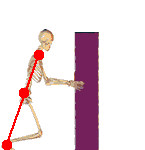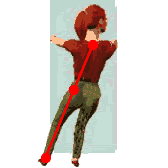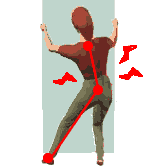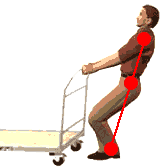| Computing |
|
YES
|
NO
|
 |
 |
 |
 |
 |
 |
Pushing and pulling can contribute to lower back disorders, or cause strains in muscles and tendons. Avoid problems by doing this:
- Keep your shoulder, hip and ankles in line, get the power from your legs.
- Grip objects at elbow height.
- Don't exert yourself to the maximum, get help if you need it.
- Watch out for sudden changes of resistance.
- Limit force requirements with machines, maintenance.
- Plan for the stopping the movement.
The guideline figure for starting or stopping the load is a force of about 25kg for men and 17kg for women.
The guideline figure for keeping the load in motion is a force of about 10 kg for men and 6.5 kg for women.
These figures assume that the force is applied with the hands between knuckle and shoulder height, and if this is not possible the guideline figures may need to be reduced.
No specific limit is offered for the distance over which the load is pushed or pulled, provided there are adequate opportunities for rest and recovery.
Reduce effort in stopping the load
Know where the load needs to stop, and slow down gradually.
Pushing vs. pulling
Pushing loads is preferable to pulling, because it involves less work by the muscles of the lower back and generally allows better visibility.
 |